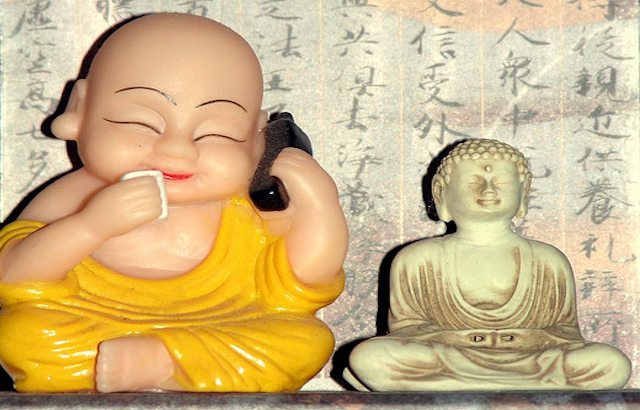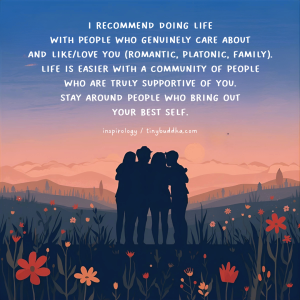
“To change the world we need to combine ancient wisdom with new technologies.” ~Paulo Cohelo
This weekend I was honored and grateful to speak at Wisdom 2.0, a conference that addressed the question:
How can we use the technologies of our age, from cell phones to social media, with mindfulness, meaning, and wisdom?
Organizer Soren Gordhamer, author of Wisdom 2.0: Ancient Secrets for the Creative and Constantly Connected, created nothing short of magic by attracting participants from all sides of the conversation, from Twitter and Facebook to Yoga Journal and Samovar Tea.
If you’ve ever sat in a room with people who love you, want the best for you, and respect your words and needs, you have a fraction of an idea of what it felt like to attend this conference. There was just that much positive energy radiating from every direction.
During the first panel of the first day, Chris Sacca (Strategic Advisor for Twitter) joked he’d never, through all his experiences in tech conferences, had so many people pay such close attention to him.
It was just that sort of crowd: people who want to bring a sense of presence and gratitude to every moment, harnessing technology to meet those needs instead of letting technology hinder them.
I kept an ear out for the most practical suggestions to manage the constant flow of data through tweets, texts, and emails without letting it consume our lives. Since I missed some of the second day, these mostly come from the first:
1. Make deliberate choices about time.
Though most of us probably receive far less email than Chris Sacca, we can all benefit from his conclusion about email: He’s only willing to spend so much time reacting to communication from people instead of creating life as he wants to experience it. For Chris, this means only responding to emails that absolutely require his response.
He cited some fascinating research that reveals we actually receive a little dopamine rush when we see something new in the inbox.
My suggestion: realize it’s worth potential guilt over ignoring non-essential messages if it means allowing you more time to be as you’d like to be, and find the dopamine in a healthier way, by doing something new instead of waiting for a new message.
2. Box out time to put technology away.
Brad (Google VP of Products) offered this simple advice, perhaps one of the most important ideas: plan for specific times when you won’t engage with technology in any way. When you are using technology, aim to create a new type of flow so you don’t lose yourself or feel anxious when dealing with what’s in front of you.
3. Remember: the most precious thing you can give someone is your presence.
Roshi Joan Halifax made this beautiful observation: Though social networking can bring us closer together, nothing can replace warm hand-to-warm-hand contact.
If you keep in mind that your presence—your attention—is the most precious thing you can give someone else, perhaps you’ll be less tempted to multi-task face-to-face encounters by tweeting, Facebooking, or emailing. It’s this type of simple but powerful understanding that can help us tame the compulsion to connect digitally when it compromises physical connection.
4. Be mindful of your reasons for connecting to technology.
Tami Simon, of Sounds True, made some insightful observations about her instinct to pull out a piece of technology. Others from the panel chimed in, creating this list:
- For stimulation
- For confirmation of importance (as in, I got so many emails, I must be important!)
- To connect with other people
- To have something to do when anxiety creeps in
- To find an escape from the rawness of an experience or to feel in control
Self-awareness is such an important step. If you realize why you’re turning to technology in times when connection or learning new information isn’t critical, you’ve made the first step to reconnecting with yourself.
5. Get the most important things done and let go of the rest.
If you don’t live in a world where you’re in control of your tasks and schedule, this might be challenging. Still, there are probably a handful of tasks you don’t really need to complete but feel obligated to do for one reason or another.
Instead of assuming you have an endless list of things to do, which probably leaves you with little time at the end of the day, be clear about what’s important to you and what you can leave undone. It’s okay not to do everything. It’s okay to have emails in the inbox. It’s okay to not update your blog for a day. You deserve time to disconnect.
6. Make minimal commitments to yourself for a clear mental space.
Many of us don’t consistently honor what we need to do to maintain physical and emotional well-being because we get sucked into technology and to-do lists. Gopi Kallayil (from Google) suggests making minimal commitments: one minute of meditation, or five minutes of exercising.
It’s easier to honor a minimal commitment, and odds are, you’ll find the time so enjoyable you’ll end up increasing it. Gopi also recommends making “non-negotiable commitments” to yourself. For example, he does yoga every Tuesday, and nothing changes that.
This is what I like to call homework for being a good human being—the things you need to do on your own before you show up to play with others if you’re to be your best, most balanced self.
7. Track your day’s presence in battery life.
Leah Pearlman (from Facebook) had some of the most practical suggestions for living peacefully in a technology-driven world. Her main advice was to make it fun instead of considering it another chore.
I enjoyed her clever realization about cell phone battery life. If your phone’s about to die at the end of the day (or if you need to charge it multiple times) you’re clearly sucked into your gadget. If you can get to the end of the day with some life left, though, you’ve probably lived the day mindfully.
—
This is just a brief sampling of what went on at Wisdom 2.0. I didn’t even touch upon my favorite moment from Day 1: when Tony Hsieh explored the culture of kindness and happiness he created at Zappos (as further explored in his book, Delivering Happiness.)
Instead of giving you the play-by-play, I’ve decided to share the most valuable perspectives I can offer: ones that come from all the good people who lent their hearts to Wisdom 2.0.
- Social Media + Mindfulness = Infectious Enlightenment (from Mei Mei Fox)
- Wisdom 2.0: Living Consciously in a Connected World (by Beth Kanter)
- Wisdom 2.0: Technology and Mindfulness (Maia Duerr)
- Notes from Wisdom 2.0 Conference: Part 2 (Marguerite Manteau-Rao)
If you’ve blogged about the Wisdom 2.0 conference, let me know and I will add the link here!
About Lori Deschene
Lori Deschene is the founder of Tiny Buddha. She started the site after struggling with depression, bulimia, c-PTSD, and toxic shame so she could recycle her former pain into something useful and inspire others to do the same. You can find her books, including Tiny Buddha’s Gratitude Journal and Tiny Buddha’s Worry Journal, here and learn more about her eCourse, Recreate Your Life Story, if you’re ready to transform your life and become the person you want to be.
- Web |
- More Posts













 Though I run this site, it is not mine. It's ours. It's not about me. It's about us. Your stories and your wisdom are just as meaningful as mine.
Though I run this site, it is not mine. It's ours. It's not about me. It's about us. Your stories and your wisdom are just as meaningful as mine.